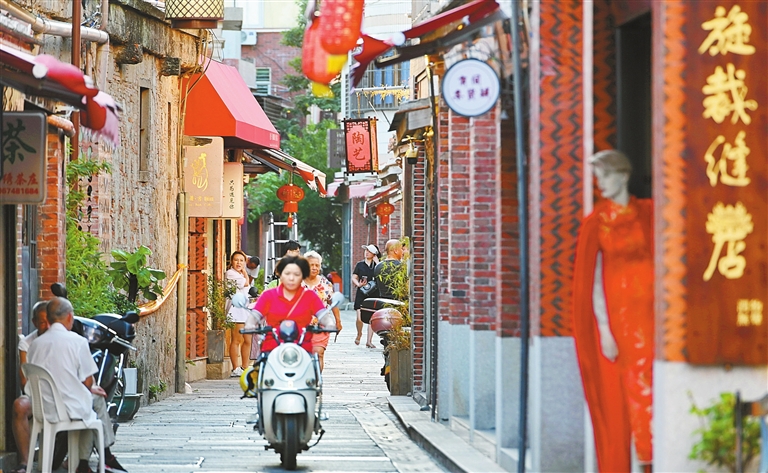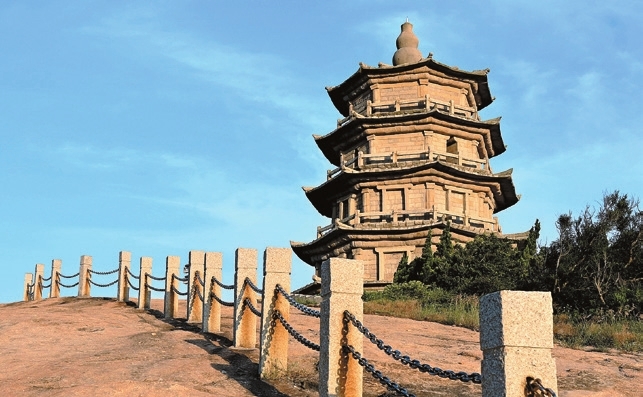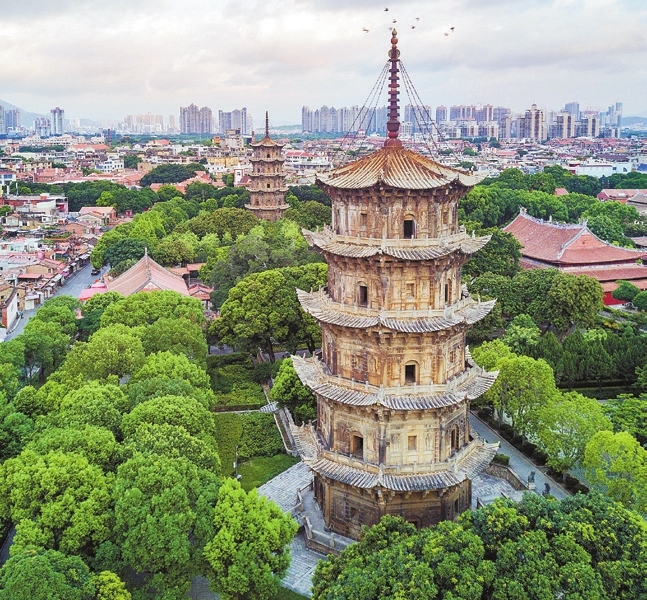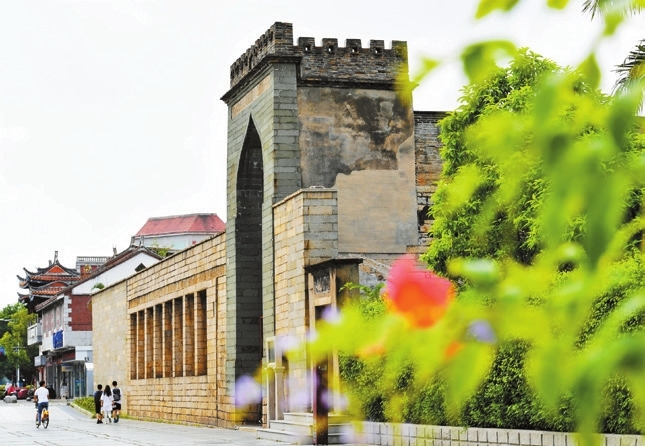





HISTORICAL sites in East China’s port city of Quanzhou won UNESCO World Cultural Heritage status July 25, bringing the total number of China’s UNESCO World Heritage sites to 56. UNESCO accepted “Quanzhou: Emporium of the World in Song-Yuan China” as a cultural property on its World Heritage List amid the 44th session of the World Heritage Committee held in Fuzhou, Fujian Province. Located on narrow plains along the coastline of Fujian, Quanzhou was one of the world’s largest ports along the historic Maritime Silk Road, particularly in ancient China’s Song Dynasty (960-1279) and Yuan Dynasty (1271-1368). Quanzhou lies northeast of Xiamen, facing Taiwan across the sea. It is one of the first famous historic and cultural cities listed by the State Council. Also known as “Hai Bin Zou Lu” (meaning coastal civilized city), Quanzhou is one of the three central cities in Fujian Province. The city covers an area of 11,015 square kilometers, with a population of 7.74 million (not including Jinmen County). It is 154 kilometer from Fuzhou City. It takes only a three- to four-hour ride to reach Quanzhou from Shenzhen by high-speed trains. Quanzhou is rich in history and culture, with a lot of places of historical interests and world-known cultural relics. In Quanzhou, there are 12 State-protected historic sites, and 27 provincial heritage conservation units. Since ancient times, different religions have been in harmony with each other, and Eastern and Western cultures have gathered together. Particularly, Buddhism, Taoism and Manichaeism have had their influences here. Many of the religious relics are of great historic and artistic value, adding a unique cultural landscape to Quanzhou. (SD-Agencies) Quanzhou’s serial cultural property includes 22 sites of administrative buildings and structures, religious buildings, and statues. The property witnessed multi-cultural communities, cultural memorial sites and monuments, the production of ceramics and iron, and a transportation network formed of bridges, docks and pagodas that guided voyagers. Here are the sites included in the list. 1. Dehua Kilns: These are outstanding examples of the porcelain kiln sites that dotted the outskirts of Quanzhou during the Song-Yuan period (960-1368). 2. Xiacaopu Iron Production Site: One of the dedicated iron plants set up by the Song Dynasty government. 3. Jiuri Mountain Wind-Praying Inscriptions: Carved in the cliff, these inscriptions record the ritual ceremonies held by state commissioners, local officials and members of the imperial clan responsible for the management of overseas trade in the Song Dynasty. Their purpose was to pray for favorable winds to aid voyages. 4. Luoyang Bridge: This was a transportation hub connecting Quanzhou northward to Fuzhou and the nation’s vast heartland and represented the pinnacle of Chinese bridge-building technology in the Song-Yuan period. 5. Cizao Kilns: They are outstanding examples of the porcelain kiln sites during the Song-Yuan period. 6. Statue of Mani in Cao’an Temple: It is a temple of Manichaeism, originating from ancient Persia. 7. Shihu Dock: It’s part of the water-land transshipment center connecting to the old city in the suburbs. 8. Liusheng Pagoda: The site where merchant ships would shift course from the main shipping route to inner ports of Quanzhou. 9. Wanshou Pagoda: A landmark for merchant ships arriving at the port of Quanzhou. 10. Anping Bridge: A vital transport link between Quanzhou and the vast southern coastal region. 11. Statue of Lao Tze: China’s largest surviving Taoist stone-carved statue. 12. Kaiyuan Temple: The largest Buddhist temple in Quanzhou with top-ranked official status during the Song-Yuan period. 13. Site of Southern Clan Office: This was an administrative agency established for Song Dynasty kinsmen who relocated to Quanzhou in 1130. 14. Confucius Temple and School: A place for Confucians to offer sacrifice and the city’s highest institute of education. 15. Islamic Tombs: They are believed to be the final resting places of two Muslim saints who came to Quanzhou in the seventh century. 16. Site of Maritime Trade Office: This was an administrative agency established by the governments of the Song and Yuan dynasties in Quanzhou to manage maritime trade affairs. 17. Qingjing Mosque: The first Islamic mosque built in Quanzhou. 18. Tianhou Temple: This site is dedicated to the worship of Mazu, the sea goddess. 19. Site of Deji Gate: The remains of the southern gate to the old city of Quanzhou. 20. Site of Shunji Bridge: The main access route to ancient Quanzhou’s commercial district. 21. Zhenwu Temple: The Taoist temple is dedicated to the worship of Emperor Zhenwu and the landmark within the port was the venue chosen by Quanzhou officials to offer sacrifices to the sea. 22. Estuary Docks: A water-land transshipment center connecting to the old city in the suburbs. (China Daily) | 
